1) National Geographic Society
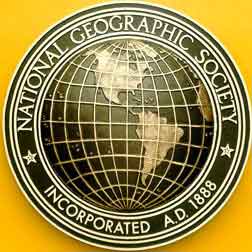
The National Geographic Society is a nonprofit scientific and educational organization dedicated to exploring our planet, protecting wildlife and habitats, and helping assure that students in K-12 are geographically literate. It was founded in 1888 "to increase and diffuse geographic knowledge”. The Society believes in the power of science, exploration and storytelling to change the world. Its purpose is to inspire, illuminate and teach. National Geographic is governed by a board of trustees, whose 21 members include distinguished educators, business executives, former government officials and conservationists.
For almost 130 years, they have funded groundbreaking scientists and explorers and shared their findings with the world. They sponsored Hiram Bingham as he brought back stories of Machu Picchu, documented Robert Ballard’s quest to find the Titanic, and supported Jane Goodall’s study of chimpanzees. Their explorers continue to push the boundaries of knowledge. To date, they’ve given out more than 12,000 grants to scientists and conservationists whose work is making a real difference in the world.
They support critical projects like the Big Cats Initiative, which is working to stop the decline in populations of big cats in the wild; and the Pristine Seas project, which has helped protect 3 million square kilometers of the ocean’s last wild places. They rely on the support of generous donors to fund their work in research, education, and conservation around the world.
2) World Wide Fund for Nature (World Wildlife Fund)
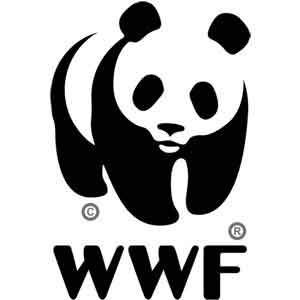
The World Wide Fund for Nature (WWF) is an international non-governmental organization founded in 1961, working in the field of the wilderness preservation, and the reduction of humanity's footprint on the environment. It was formerly named the World Wildlife Fund, which remains its official name in Canada and the United States.
It is the world's largest conservation organization with over 5 million supporters worldwide, working in more than 100 countries, supporting around 1,300 conservation and environmental projects. WWF is a foundation, with 55% of funding from individuals and bequests, 19% from government sources (such as the World Bank, DFID, USAID) and 8% from corporations in 2014.
The group's mission is "to stop the degradation of the planet’s natural environment and to build a future in which humans live in harmony with nature." Currently, much of its work focuses on the conservation of three biomes that contain most of the world's biodiversity: oceans and coasts, forests, and freshwater ecosystems. Among other issues, it is also concerned with endangered species, sustainable production of commodities and climate change.
3) Rainforest Action Network (RAN)

Rainforest Action Network campaigns for the forests, their inhabitants and the natural systems that sustain life by transforming the global marketplace through education, grassroots organizing and non-violent direct action.
It is an environmental organization based in San Francisco, California, United States. The organization was founded by Randy "Hurricane" Hayes and Mike Roselle in 1985, and first gained national prominence with a grassroots organizing campaign that, in 1987, succeeded in convincing Burger King to cancel $35 million worth of destructive Central American rainforest beef contracts. Protecting forests and challenging corporate power has remained a key focus of RAN’s campaigns since, and has led RAN into campaigns that have led to transformative policy changes across home building, wood purchasing and supplying, automobile, fashion, paper and banking industries.
4) People for the Ethical Treatment of Animals (PETA)
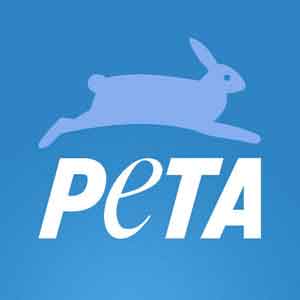
“People for the Ethical Treatment of Animals (PETA)” is an American animal rights organization based in Norfolk, Virginia, and led by Ingrid Newkirk, its international president. A nonprofit corporation with 300 employees, it claims that it has 3 million members and supporters (5 million in total) and is the largest animal rights group in the world. Its slogan is "animals are not ours to eat, wear, experiment on, use for entertainment, or abuse in any other way."
Founded in March 1980, by Newkirk and fellow animal rights activist Alex Pacheco, the organization first caught the public's attention in the summer of 1981 during what became known as the Silver Spring monkeys case, a widely publicized dispute about experiments conducted on 17 macaque monkeys inside the Institute of Behavioral Research in Silver Spring, Maryland. The case lasted ten years, involved the only police raid on an animal laboratory in the United States, triggered an amendment in 1985, to that country's Animal Welfare Act, and established PETA as an internationally known organization. Today it focuses on four core issues—opposition to factory farming, fur farming, animal testing, and animals in entertainment. It also campaigns against eating meat, fishing, and killing of animals regarded as pests, the keeping of chained backyard dogs, cock fighting, dog fighting, and bullfighting.
5) International Fund for Animal Welfare (IFAW)
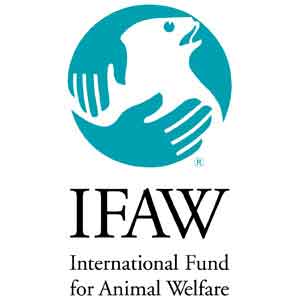
The International Fund for Animal Welfare (IFAW) is one of the largest animal welfare and conservation charities in the world. IFAW’s mission is to rescue and protect animals around the world. The group's declared mission is to "rescue individuals, safeguard populations, and preserve habitat".
Founded in 1969, the International Fund for Animal Welfare saves individual animals, animal populations and habitats all over the world. With projects in more than 40 countries, IFAW provides hands-on assistance to animals in need, whether it's dogs and cats, wildlife and livestock, or rescuing animals in the wake of disasters. It also advocates saving populations from cruelty and depletion, such as our campaign to end commercial whaling and seal hunts.
6) The Nature Conservancy
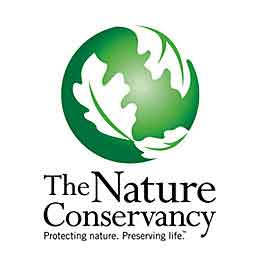
The Nature Conservancy is a charitable environmental organization, headquartered in Arlington, Virginia. Its mission is to "conserve the lands and waters on which all life depends. The Conservancy pursues non-confrontational, pragmatic solutions to conservations challenges working with partners including indigenous communities, businesses, governments, multilateral institutions, and other nonprofits.
The Conservancy's work focuses on the global priorities of Lands, Water, Climate, Oceans, and Cities. Founded in Arlington, Virginia, in 1951, The Nature Conservancy now impacts conservation in 69 countries, including all 50 states of the United States. The Conservancy has over one million members, and has protected more than 119,000,000 acres (48,000,000 ha) of land and thousands of miles of rivers worldwide. The Nature Conservancy also operates more than 100 marine conservation projects globally. The organization's assets total $6.71 billion as of 2015. The Nature Conservancy is the largest environmental nonprofit by assets and by revenue in the Americas.
7) Greenpeace International
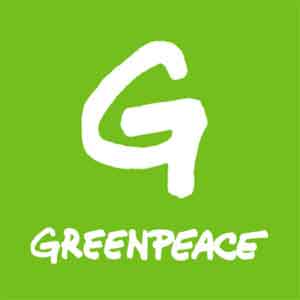
Greenpeace is a non-governmental environmental organization with offices in over 40 countries and with an international coordinating body in Amsterdam, the Netherlands. Founded by Canadian and US ex-pat environmental activists in 1971, Greenpeace states its goal is to "ensure the ability of the Earth to nurture life in all its diversity" and focuses its campaigning on worldwide issues such as climate change, deforestation, overfishing, commercial whaling, genetic engineering, and anti-nuclear issues. It uses direct action, lobbying, research, and ecotage to achieve its goals. The global organization does not accept funding from governments, corporations, or political parties, relying on 2.9 million individual supporters and foundation grants. Greenpeace has a general consultative status with the United Nations Economic and Social Council and is a founding member of the INGO Accountability Charter; an international non-governmental organization that intends to foster accountability and transparency of non-governmental organizations.
8) Conservation International
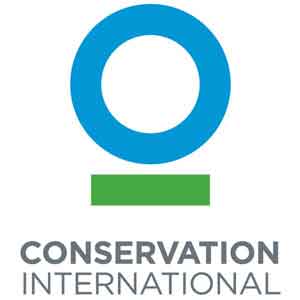
Conservation International (CI) is an American nonprofit environmental organization headquartered in Arlington, Virginia. Its goal is to protect nature as a source of food, fresh water, livelihoods and a stable climate.
Conservation International was founded in 1987 with the aim of analyzing the problems most dangerous or harmful to nature and building a foundation dedicated to solving these issues on a global scale. CI's work focuses on science, policy, and partnership with businesses and communities. The organization employs more than 1,000 people and works with 2,000+ partners in more than 30 countries. CI has helped establish 1,200 protected areas across 78 countries and protected more than 730 million hectares of land, marine and coastal areas.
In CI's first year, the organization purchased a portion of Bolivia's foreign debt. The money was then redirected to support conservation in the Beni Biosphere Reserve. Since this first-ever debt-for-nature swap, more than $1 billion of similar deals have been made around the world. In 1989, CI formally committed to the protection of biodiversity hotspots, ultimately identifying 34 such hotspots around the world and contributing to their protection. The model of protecting hotspots became a key way for organizations to do conservation work.
9) Wildlife Conservation Society

WCS's goal is to conserve the world's largest wild places in 15 priority regions, home to more than 50% of the world's biodiversity. WCS saves wildlife and wild places worldwide through science, conservation action, education, and inspiring people to value nature. WCS envisions a world where wildlife thrives in healthy lands and seas, valued by societies that embrace and benefit from the diversity and integrity of life on earth.
WCS (Wildlife Conservation Society) was founded in 1895 as the New York Zoological Society (NYZS) and currently works to conserve more than two million square miles of wild places around the world. The organization is led by President and CEO Cristián Samper, former Director of the Smithsonian Institution's National Museum of Natural History. Based at the Bronx Zoo, WCS maintains approximately 500 field conservation projects in 65 countries, with 200 PhD scientists on staff. It manages four New York City wildlife parks in addition to the Bronx Zoo: the Central Park Zoo, New York Aquarium, Prospect Park Zoo and Queens Zoo. Together these parks receive 4 million visitors per year. All of the New York City facilities are accredited by the Association of Zoos and Aquariums (AZA).
10) Endangered Species International
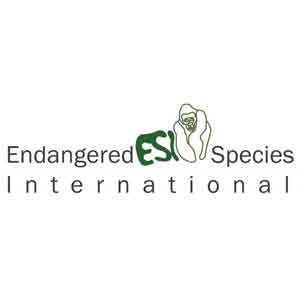
Endangered Species International is strongly committed to reversing the trend of human-induced species extinction, saving endangered animals, and preserving wild places. Its values are - passion for nature, respect all life, integrity, optimism for solving the species extinction crisis, and progress at all levels. It's addressing the real and urgent species extinction needs. More than 16,000 species are threatened to become extinct in the near future. It focuses on species that have the biggest chance to become extinct including those that do not attract the media attention. It also works hard on saving endangered species found in various types of habitat and serving as protecting umbrella to other endangered species. It develops cutting-edge conservation science, implement this research in field projects around the world, and then link both research and results to local, national, and global policy by convening dialogues between governments, civil society and the private sector. Its staff is interdisciplinary ranging from endangered species experts, scientists, conservation awareness and communication leaders. Its staff has a strong local and international experience. It favours the emergence of young endangered species and conservation leaders around the world and integrate them in its projects.
11) Natural Resources Defense Council
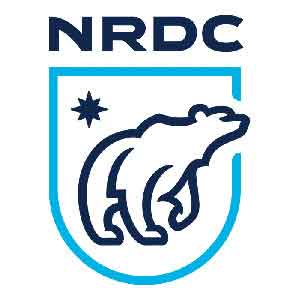
NRDC works to safeguard the earth—its people, its plants and animals, and the natural systems on which all life depends.
The Natural Resources Defense Council (NRDC) is a New York City-based, nonprofit international environmental advocacy group, with offices in New York City, Washington, D.C., San Francisco, Los Angeles, Chicago, Bozeman, Montana, and Beijing, China. Founded in 1970, NRDC today has 2.4 million members and online activities nationwide and a staff of about 500 lawyers, scientists and other policy advocates across the globe to ensure the rights of all people to the air, the water, and the wild. The charity monitoring group Charity Navigator gave the Natural Resources Defense Council four out of four stars in its three rating categories: overall, financial practices, and accountability & transparency.
12) Friends of the Earth International (FoEI)
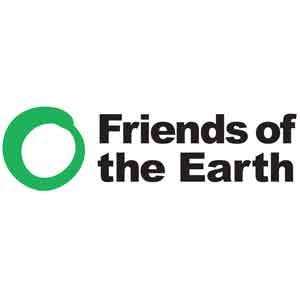
Friends of the Earth was founded in 1969 as an anti-nuclear group by Robert O Anderson who contributed $200,000 in personal funds to launch FOTE with David Brower, Donald Aitken and Jerry Mander after Brower's split with the Sierra Club. FOTE main mission was to lock up and prevent further development of nuclear energy. It is the world’s largest grassroots environmental network, uniting 75 national member groups and some 5,000 local activist groups on every continent. With over 2 million members and supporters around the world, it campaigns on today’s most urgent environmental and social issues. It challenges the current model of economic and corporate globalization, and promotes solutions that will help to create environmentally sustainable and socially just societies.
13) World Vets
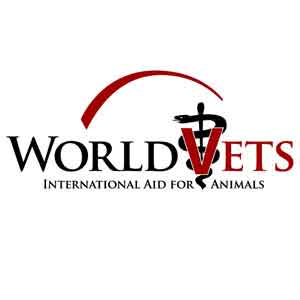
World Vets' Mission is to improve the health and wellbeing of animals by providing veterinary aid and training in developing countries and by providing disaster relief worldwide. World Vets vision is to create a world where all animals have access to skilled veterinary care. Its programs span 45 countries on 6 continents. It works in partnership with animal welfare groups, foreign governments, non-governmental organizations, agriculture and public health officials, as well as, a wide variety of veterinary professionals in the countries where we provide service. World Vets is able to improve the lives of thousands of animals each year by providing free veterinary care through our dedicated volunteer force of over 4,000 individuals combined with financial support and in-kind donations.
14) Biosphere Expeditions

Biosphere Expeditions is a wildlife research and conservation nonprofit organization whose main focus is to conserve the biosphere with volunteer-led scientific conservation expeditions to several countries around the world. It was founded in 1999. Biosphere Expeditions states its purpose as the promotion of sustainable conservation of the planet's wildlife by involving the public, with scientists across the globe on real hands-on wildlife research and conservation expeditions. Expeditions typically place interested people with no research experience alongside scientists widely accepted to be at the forefront of their conservation work. Anyone may join an expedition as there are neither special skills or fitness requirements nor age limitations. Biosphere Expeditions promotes sustainable conservation and preservation of the planet's wildlife by forging alliances between scientists and the public.
15) Environmental Defense Fund

Environmental Defense Fund or EDF (formerly known as Environmental Defense) is a United States–based nonprofit environmental advocacy group. The group is known for its work on issues including global warming, ecosystem restoration, oceans, and human health, and advocates using sound science, economics and law to find environmental solutions that work. It is nonpartisan, and its work often advocates market-based solutions to environmental problems.
It is one of the world’s largest environmental organizations, with more than 1.5 million members and a staff of 550 scientists, economists, policy experts, and other professionals around the world. It believes prosperity and environmental stewardship must go hand in hand. It is an optimist because it has seen its ideas make a huge difference. And it builds strong partnerships across interests to ensure lasting success. It achieves results by finding solutions that benefit people while protecting natural systems.
16) Oceana
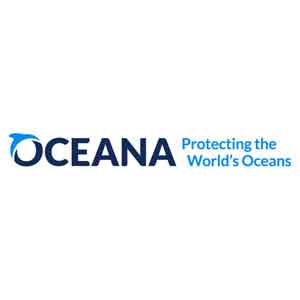
Oceana seeks to make our oceans as rich, healthy, and abundant as they once were. Oceana seeks to make our oceans more biodiverse and abundant by winning policy victories in the countries that govern much of the world's marine life.
Oceana was established in 2001 by a group of leading foundations — The Pew Charitable Trusts, Oak Foundation, Marisla Foundation (formerly Homeland Foundation), and the Rockefeller Brothers Fund. It is an international organization focused solely on oceans, dedicated to achieving measurable change by conducting specific, science-based campaigns with fixed deadlines and articulated goals. Oceana was created to identify practical solutions and make them happen. Since its founding, Oceana has won more than 100 victories and protected more than 1.2 million square miles of ocean.
17) Coral Reef Alliance
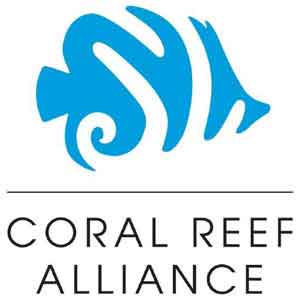
CORAL promotes conservation through its Coral Reef Sustainable Destination (CRSD) approach, a holistic model that combines marine protected area (MPA) management and sustainable business operation for community benefit.
The Coral Reef Alliance (CORAL) is a nonprofit organization based in San Francisco, California, which partners with local reef communities around the world to protect coral reefs. CORAL was founded in Berkeley, California, in 1994 by Stephen Colwell, and is currently headed by Dr. Michael Webster. With 19% of the world's coral reefs already destroyed and another 35% at immediate risk or threatened due to human pressures, organizations like CORAL are addressing an urgent need.
The organization was founded in 1994 by Stephen Colwell in Berkeley, California. In the beginning, the goal was simple: to engage the diving community in coral reef conservation. Today, CORAL's mission of uniting communities to save coral reefs has dramatically broadened the scope of its work and has provided extensive opportunities to have an even greater impact around the globe.
18) Wildlife Conservation Network
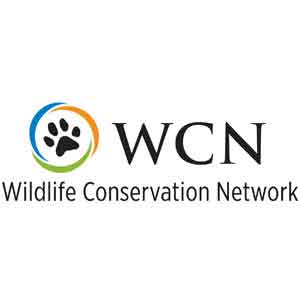
The Wildlife Conservation Network (WCN) is a United States-based 501(c)(3) nonprofit organization whose mission is to protect endangered species and preserve their natural habitats by supporting entrepreneurial conservationists who pursue innovative strategies for people and wildlife to co-exist and thrive.
WCN was built on the premise that one person can truly make a difference for wildlife. Independent wildlife conservationists have the power to ensure a future for wildlife by developing new solutions and working closely with communities to save endangered animals. In order to succeed, these wildlife heroes need funding to run their programs and assistance to build their organizations and ensure their efforts are scalable and sustainable. WCN partners with leading independent wildlife conservationists, providing them with an array of services and training in areas such as marketing, accounting, and strategic planning. WCN also creates connections to donors who can make these conservationists’ work possible.
19) Rainforest Alliance
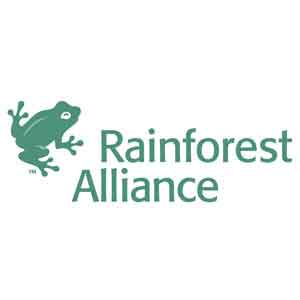
The Rainforest Alliance is a non-governmental organization (NGO) working to conserve biodiversity and ensure sustainable livelihoods by transforming land-use practices, business practices and consumer behavior. Based in New York City with offices throughout North and South America, Asia, Africa and Europe, it was founded in 1987 by Daniel Katz, who serves on its board of directors, and is led by President Nigel Sizer. The Rainforest Alliance is a growing network of people who are inspired and committed to working together to achieve our mission of conserving biodiversity and ensuring sustainable livelihoods. Through creative, pragmatic collaboration, we aim to rebalance the planet by building strong forests and healthy communities around the world.
The Rainforest Alliance’s talented, multilingual, and diverse staff works hand-in-hand around the world with farmers, foresters, businesses, researchers, civic organizations, and governments to meet our shared mission of conserving biodiversity and ensuring sustainable livelihoods. From its earliest days in the tropics of Central America, it has grown its alliance by partnering with forest and farming communities, governments, and companies to conserve critically important forests and cultivate sustainable livelihoods. Today, it conducts training, certification, and verification in 74 countries around the world.
20) World Animal Protection
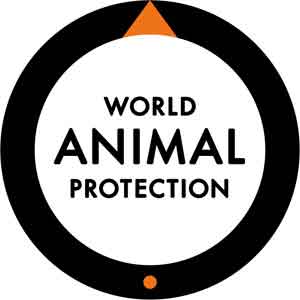
World Animal Protection (formerly The World Society for the Protection of Animals) is an international nonprofit animal welfare organization that has been in operation for over 30 years. The charity describes its vision as: A world where animal welfare matters and animal cruelty has ended. “We end the needless suffering of animals. We influence decision makers to put animals on the global agenda. We help the world see how important animals are to all of us. We inspire people to change animals’ lives for the better. We move the world to protect animals.” The charity has regional hubs in: Africa, Asia, Europe, Latin America and North America, and offices in 14 countries. The international office is in London.
The organization was previously known as the World Society for the Protection of Animals (WSPA). This resulted from the merger of two animal welfare organizations in 1981, the World Federation for the Protection of Animals (WFPA) founded in 1953 and the International Society for the Protection of Animals (ISPA) founded in 1959. In June 2014, the charity became World Animal Protection, at a cost of £168,000.
21) Last Chance for Animals (LCA)

Last Chance for Animals (LCA) is a US nonprofit organization that advocates for animal rights. It is known for its documentary, Dealing Dogs, and for its investigations against the use of animals for testing purposes. The organization was founded in 1984 by Hollywood actor Chris DeRose as a group to oppose vivisection. In the organization's early years, DeRose led teams of activists employing non-violent strategies modeled after social movements led by such leaders as Mahatma Gandhi and Martin Luther King, Jr. Last Chance for Animals seeks to eliminate animal exploitation through direct action, education, investigations, legislation, and media attention. LCA opposes the use of animals in food and clothing production, scientific experimentation, and entertainment. LCA also promotes a cruelty-free lifestyle and the ascription of rights to non-human beings. They support veganism and oppose animal testing.
22) Defenders of Wildlife
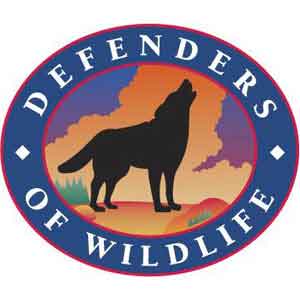
Defenders of Wildlife is a 501(c)(3) nonprofit conservation organization based in the United States. Its mission is to protect all animals and plants native to North America in their natural communities. Founded in 1947, Defenders of Wildlife is a major national conservation organization dedicated to conserving wildlife, protecting their natural habitats, and safeguarding biodiversity. Operationally, Defenders of Wildlife has a three-pronged approach:
(i) On the ground at the state and local level, Defenders is involved in developing programs that protect and restore key species and habitats. (ii) Defenders works with state, national, and international policy makers to secure laws and policies that protect animals and their habitats. (iii) Defenders is active in the courts establishing legal safeguards for native wildlife and fighting efforts to roll back environmental protections.
23) Center for Biological Diversity
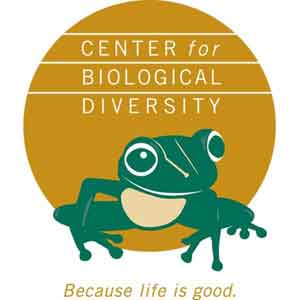
The Center for Biological Diversity (Center), based in Tucson, Arizona, is a nonprofit membership organization with approximately 1.1 million members and online activists, known for its work protecting endangered species through legal action, scientific petitions, creative media and grassroots activism. The Center has offices and staff in New Mexico, Arizona, Nevada, California, Oregon, Illinois, Minnesota, Alaska, Vermont, Florida and Washington, D.C. It was founded in 1989 by Kieran Suckling, Peter Galvin, Todd Schulke and Robin Silver. Given a small grant by the Fund for Wild Nature, the organization started in 1989 as a small group by the name of Greater Gila Biodiversity Project, with the objective to protect endangered species and critical habitat in the southwest. The organization later grew and became the Center for Biological Diversity.
24) Sierra Club
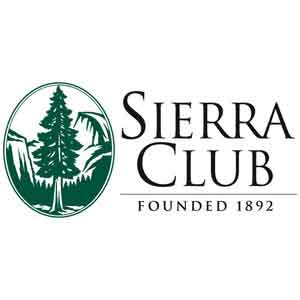
The Sierra Club is an environmental organization in the United States. It was founded on May 28, 1892, in San Francisco, California, by the Scottish-American preservationist John Muir, who became its first president. The Sierra Club's stated mission is "To explore, enjoy, and protect the wild places of the earth; to practice and promote the responsible use of the earth's ecosystems and resources; to educate and enlist humanity to protect and restore the quality of the natural and human environment; and to use all lawful means to carry out these objectives."
Traditionally associated with the progressive movement, the club was one of the first large-scale environmental preservation organizations in the world, and currently engages in lobbying politicians to promote green policies. In recent years, the club has gravitated toward green politics and especially toward bright green environmentalism. Recent focuses of the club include promoting green energy, mitigating global warming, and opposing coal.
25) EARTHJUSTICE
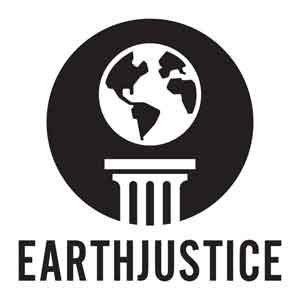
Earthjustice is a nonprofit public interest law organization based in the United States dedicated to environmental issues. It is headquartered in San Francisco, has nine regional offices across the United States, an international department, a communications team, and a policy team in Washington, DC. Earthjustice’s work is divided into three major program areas:
(i) Health and Toxics – focuses on cases that fight for healthy communities. (ii) Climate and Energy – focuses on cases that advance clean energy and promote a stable climate. (iii) The Wild – focuses on cases that preserve our wildlife and wild lands.
Earthjustice also partners with organizations from other regions, including Latin America, Russia, Japan, and China to promote the development of environmental law in their respective countries. Every year, Earthjustice submits a country-by-country report on Human Rights and the Environment to the United Nations.
It is a nonprofit and does not charge any of its clients for its services. Funding for the organization comes from individual donations and foundations. It does not receive any funding from corporations or governments. The organization was founded in 1971 as the Sierra Club Legal Defense Fund, though it was fully independent from the Sierra Club. It changed its name to Earthjustice in 1997 to better reflect its role as a legal advocate representing hundreds of regional, national and international organizations. As of January 2009, the group had provided free legal representation to more than 700 clients ranging from the Sierra Club, World Wildlife Fund, and the American Lung Association to smaller state and community groups, such as the Maine Lobstermen’s Association and the Friends of the Everglades.
26) Ocean Conservancy
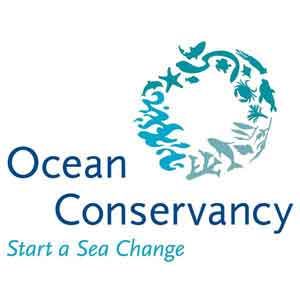
Ocean Conservancy (founded as The Delta Corporation) is a nonprofit environmental advocacy group based in Washington, D.C., United States. The organization helps formulate ocean policy at the federal and state government levels based on peer reviewed science. Ocean Conservancy is one of the few organizations that help protect wildlife in the ocean.
Ocean Conservancy was founded in 1972, as the Delta Corporation to promote healthy and diverse ocean ecosystems, and to oppose practices that threaten oceanic and human life. Through several program areas, Ocean Conservancy advocates for protecting of special marine habitats, restoring sustainable fisheries, reducing the human impact on ocean ecosystems and managing U.S. ocean resources. Ocean Conservancy efforts are guided by a 17-member volunteer board of directors. Ocean Conservancy is a tax-exempt not-for-profit organization. It meets the Better Business Bureau's 20 Standards for Charity Accountability.
27) Global Coral Reef Alliance
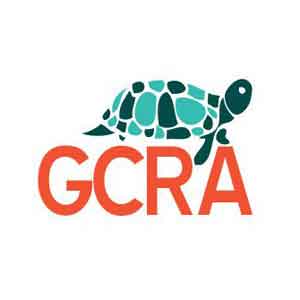
The Global Coral Reef Alliance is a small, 501(c)(3) nonprofit organization dedicated to growing, protecting and managing the most threatened of all marine ecosystems—coral reefs. Founded in 1990, GCRA is a coalition of volunteer scientists, divers, environmentalists and other individuals and organizations, committed to coral reef preservation. We primarily focus on coral reef restoration, marine diseases and other issues caused by global climate change, environmental stress and pollution.
GCRA scientists work with foundations, governments or private firms to build, restore and maintain coral reefs, nurseries and marine sanctuaries. Projects include restoration and construction of coral reefs for mariculture and tourism as well as breakwaters for shore protection.
28) Project AWARE
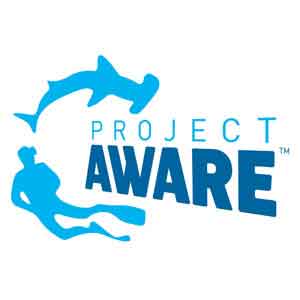
Project AWARE is a registered nonprofit organization working with volunteer scuba divers. With offices in UK, US and Australia, Project AWARE supports divers acting in their own communities to protect the ocean, with a focus on implementing lasting change in two core areas: shark conservation and marine litter.
In 1989, the Professional Association of Diving Instructors (PADI) established the Project AWARE Foundation. By 2008, it had become one of the largest (by geographical coverage) of several 'industry led' environmental organizations, with administration offices in the United States, United Kingdom, Australia, Switzerland and Japan. In 1992, Project AWARE Foundation became a registered nonprofit organization with an environmental mission and purpose. Project AWARE relaunched as a movement in 2011 to help divers in more than 180 countries to work together for a clean, healthy and abundant ocean.
29) African Wildlife Foundation
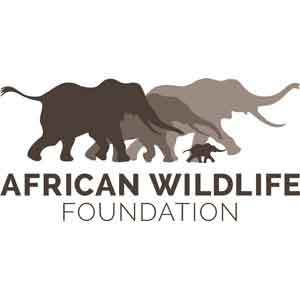
The African Wildlife Foundation, together with the people of Africa, works to ensure the wildlife and wild lands of Africa will endure forever. AWF’s programs and conservation strategies are designed to protect the wildlife and wild lands of Africa and ensure a more sustainable future for Africa’s people. AWF stops the degradation of animals and the world`s environment.
The African Wildlife Foundation (AWF), founded in 1961 as the African Wildlife Leadership Foundation, is an international conservation organization that focuses on critically important landscapes in Africa. Since its inception, the organization has protected endangered species and land, promoted conservation enterprises that benefit local African communities, and trained hundreds of African nationals in conservation—all to ensure the survival of Africa’s unparalleled wildlife heritage.
30) Wildlife Trust of India

Wildlife Trust of India (WTI) is a leading Indian nature conservation organization committed to the service of nature. Its mission is to conserve wildlife and its habitat and to work for the welfare of individual wild animals, in partnership with communities and governments. WTI’s team of 150 dedicated professionals work towards achieving its vision of a secure natural heritage of India, in six priority landscapes, knit holistically together by seven key strategies or Big Ideas.
WTI was formed in November 1998 in response to the rapidly deteriorating condition of wildlife in India. It currently focuses its resources on six priority landscapes – northeast India, western Himalayas, terai, southern Ghats system, central India and marine.
31) Nature Conservation Foundation
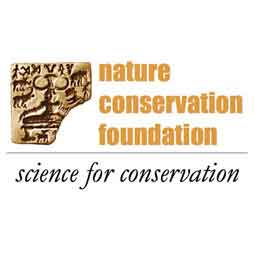
The Nature Conservation Foundation is a non-governmental wildlife conservation and research organization based in Mysore, India. They promote the use of science for wildlife conservation in India. The organization was founded in 1996. Their mission is to carry out "science-based and socially responsible conservation".
The organization works in a variety of habitats. The high altitude program focuses on human wildlife conflicts and conservation of endangered species such as the snow leopard and the Tibetan gazelle. It has partnered with the International Snow Leopard Trust and the Government of India to launch a Project Snow Leopard, similar to Project Tiger for the protection of the wildlife in the Himalayan landscapes. It runs a rainforest restoration program in the Annamalai hills in the Western Ghats where fragments of degraded patches of rainforests outside national parks or wildlife sanctuaries are restored in partnership with the private tea and coffee plantations.
32) In Defense of Animals
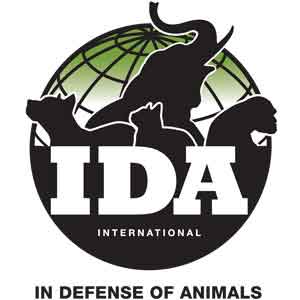
Founded in 1983 by Dr. Elliot Katz DVM in San Rafael, California, USA, In Defense of Animals is an international animal rights and rescue organization dedicated to protecting the rights, welfare and habitats of animals. It has 60,000 members and an annual budget of $650,000. The group's slogan is "working to protect the rights, welfare, and habitats of animals". IDA has become known, in particular, for its campaigns against animal experiments conducted by the U.S. military, and experiments in which baby monkeys are separated from their mothers. Journalist and author Deborah Blum has described its strategy as "pure pit bull. It picks a target carefully and refuses to let go".
“We are supported by a network of tens of thousands of determined activists, dedicated volunteers, interns and donors. We work to expose and end animal experimentation; protect wildlife and restore balance in their natural habitats; end the exploitation and abuse of wild species living in captivity, protect domestic and wild species worldwide from abuse and slaughter for food, conduct cruelty investigations and rescue operations, and provide veterinary care for sick, abused and orphaned animals in our natural habitat sanctuaries.”
IDA Africa was founded by former Portland, Oregon veterinarian Dr. Sheri Speede, the Center provides sanctuary for chimpanzee orphans in Cameroon, while promoting social and cultural conditions that ensure that endangered great apes survive and thrive in their natural habitats. To help ensure the survival of chimpanzees orphaned by the illegal ape meat trade, our Sanaga-Yong Chimpanzee Rescue Center currently cares for 72 orphaned chimpanzees in a forested habitat.
IDA INDIA is a nonprofit grassroots-level animal protection organization, dedicated to establishing and defending the rights of all non–human living creatures. In Defense of Animals, India was established on 31st October 1996. Immediately the project of neutering of street dogs was taken up. A small beginning was made in March 1997 in two garages of a residential colony in a suburb of Mumbai. For three years IDA INDIA worked in small make shift camps. With the intervention of the Mumbai High Court, the Corporation handed over the premises at Deonar to IDA INDIA on 22nd December 1999.
33) Mercy for Animals
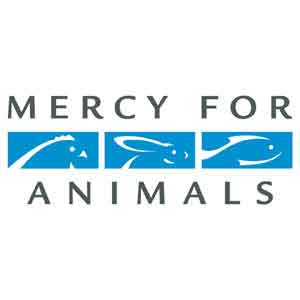
Mercy For Animals (MFA) is an international nonprofit organization dedicated to preventing cruelty to farmed animals and promoting compassionate food choices and policies, founded in October 1999. Nathan Runkle is the group's executive director and founder. Focusing primarily on advocacy on behalf of farmed animals, MFA runs a number of campaigns that aim to educate the public on animal protection issues and to encourage them to adopt a vegan diet. It has engaged in several undercover investigations, primarily of egg farms, and has produced television commercials showing the treatment of animals in slaughterhouses and factory farms. They have offices in Los Angeles, Chicago, New York City, Ohio, Texas, and Toronto. MFA's national headquarters is located in Los Angeles. Mercy for Animals is currently one of Animal Charity Evaluators' Top Charities.
34) Animal Legal Defense Fund (ALDF)
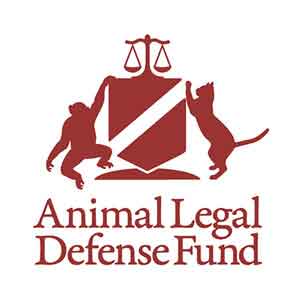
The Animal Legal Defense Fund’s mission is to protect the lives and advance the interests of animals through the legal system. ALDF accomplishes this mission by filing high-impact lawsuits to protect animals from harm, providing free legal assistance and training to prosecutors to assure that animal abusers are punished for their crimes, supporting tough animal protection legislation and fighting harmful animal protection legislation, and providing resources and opportunities to law students and professionals to advance the emerging field of animal law.
Founded in 1979 by attorneys active in shaping the emerging field of animal law, ALDF has blazed the trail for stronger enforcement of anti-cruelty laws and more humane treatment of animals in every corner of American life. Today, ALDF’s groundbreaking efforts to push the U.S. legal system to end the suffering of abused animals are supported by thousands of dedicated attorneys and more than 200,000 members and supporters.
35) Humane Society International (HSI)
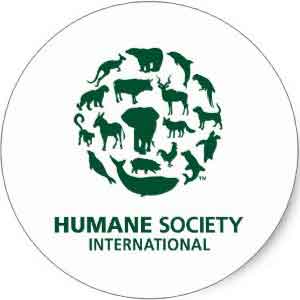
Humane Society International is one of the only global animal protection organizations working to help all animals—including animals in laboratories, animals on farms, companion animals and wildlife—and our record of achievement demonstrates our dedication and effectiveness. HSI: Celebrating Animals, Confronting Cruelty. Humane Society International (HSI) is the international division of The Humane Society of the United States. Founded in 1991, HSI has expanded The HSUS's activities into Central and South America, Africa, and Asia. HSI's Asian, Australian, Canadian, and European offices carry out field activities and programs.
With significant operations in 20 countries, and a presence in three dozen more, HSI has made a difference on a wide range of issues: working to combat the dog meat trade, pressing for 21st-century methods in animal testing, persuading corporate giants to adopt humane food procurement policies, ending the commercial slaughter of marine mammals, aiding animals in disaster, fighting trophy hunting and the wildlife trade, and eliminating spectacles of cruelty — from bullfighting to animal sacrifice to dogfighting and cockfighting.
36) 350.org

350.org is an international environmental organization encouraging citizens to action with the belief that publicizing the increasing levels of carbon dioxide will pressure world leaders to address climate change and to reduce levels from 400 parts per million to 350 parts per million. It was founded by author Bill McKibben with the goal of building a global grassroots movement to raise awareness about human-driven climate change, to confront climate change denial, and to cut emissions of carbon dioxide in order to slow the rate of global warming. 350.org takes its name from the research of Goddard Institute for Space Studies scientist James E. Hansen, who posited in a 2007 paper that 350 parts-per-million (ppm) of CO2 in the atmosphere is a safe upper limit to avoid a climate tipping point.
37) Alliance for International Reforestation
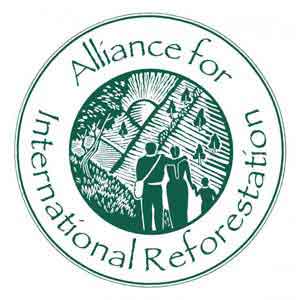
Alliance for International Reforestation is a nonprofit improving human and environmental health in Guatemala. AIR’s Mission is to implement educational programs and agro-forestry methods in Central America in order to protect water sources, prevent mudslides, reduce erosion, prevent lung disease and provide more nutritious crops, while protecting the Earth. For over 22 years, AIR’s team has planted over 4.2 million trees by hand in Guatemala and Nicaragua; has trained almost 3,000 families in sustainable farming for better crops; has built over 800 efficient stoves to protect lung health; has produced a sustainability curriculum that is used in hundreds of Guatemalan schools; and started dozens of micro-businesses. AIR, Inc. has won international awards from CNN Heroes in 2011;“The National Arbor Day Foundation”; Instituto Nacional de Agricultura y Bosques (INAB); and the United Nations Framework Convention on Climate Change (UNFCCC) in 2013.
38) American Society for the Prevention of Cruelty to Animals (ASPCA)
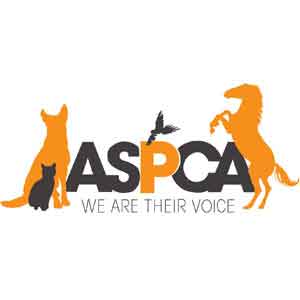
The American Society for the Prevention of Cruelty to Animals® (ASPCA®) was the first humane society to be established in North America and is, today, one of the largest in the world. It was founded on the belief that animals are entitled to kind and respectful treatment at the hands of humans and must be protected under the law. Headquartered in New York City, the ASPCA maintains a strong local presence, and with programs that extend our anti-cruelty mission across the country, it is recognized as a national animal welfare organization. It is a privately funded 501(c)(3) not-for-profit corporation, and are proud to boast more than 2 million supporters across the country. The ASPCA’s mission, as stated by founder Henry Bergh in 1866, is “to provide effective means for the prevention of cruelty to animals throughout the United States.”
Helping vulnerable animals and keeping pets in safe and loving homes requires a commitment from all of us—advocates, pet owners, shelters, leaders, and entire communities. When we work together under a common cause, we’re both saving lives and elevating our society and its laws to ensure cruelty victims and other at-risk animals receive the protection and care they deserve.
39) Amazon Conservation Association (ACA)
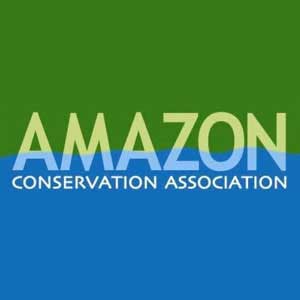
Its mission is to protect the world's most diverse landscapes, train the next generation of Amazonian conservationists, and partner with communities to support livelihoods that sustain biodiversity. It is working to conserve the biodiversity of the Amazon basin through the development of new scientific understanding, sustainable resource management and rational land-use policy. A principal objective of the organization is to develop field research sites ranging from high elevation cloud forest to the lowland Amazon. It is this altitudinal gradient that harbors the greatest known richness of species on the planet. At the ACA field sites, university students and researchers are brought to study and observe this diverse ecosystem.
40) Best Friends Animal Society
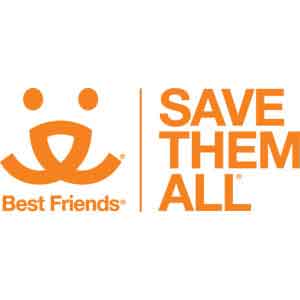
Best Friends Animal Society, founded in its present form in 1991, is an American nonprofit 501(c)(3) animal welfare organization. Best Friends works nationwide in outreach programs with shelters, rescue groups and members to promote pet adoption, no-kill animal rescue, and spay-and-neuter practices. The mission of Best Friends Animal Society is to bring about a time when there are No More Homeless Pets. It does this by helping end the killing in America's animal shelters through building community programs and partnerships all across the nation. “We believe that by working together we can Save Them All”. At the heart of Best Friends is the Sanctuary, where, at any given time, about 1,600 animals are turning their lives around, receiving the medical help they need, and getting love and acceptance to help them overcome their past. While searching for their forever homes, they live in a scenic, healing environment among human and animal friends. Best Friends owns nearly 3,700 acres, and we lease another 17,000 acres of state and federal land. Nearly 30,000 people visit every year to meet the animals and tour what has become the nation's largest no-kill sanctuary for companion animals.
41) Big Life Foundation
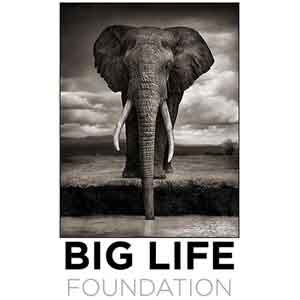
Big Life was co-founded by photographer Nick Brandt and award-winning conservationist Richard Bonham in September 2010. Since its inception, Big Life has expanded to employ hundreds of Maasai rangers—with more than 40 permanent outposts and tent-based field units, 13 vehicles, tracker dogs, and aerial surveillance—protecting 2 million acres of wilderness in the Amboseli-Tsavo-Kilimanjaro ecosystem of East Africa. Big Life was the first organization in East Africa to establish coordinated cross-border anti-poaching operations. Using innovative conservation strategies and collaborating closely with local communities, partner NGOs, national parks, and government agencies, Big Life seeks to protect and sustain East Africa’s wildlife and wild lands, including one of the greatest populations of elephants left in East Africa.
42) Blind Cat Rescue & Sanctuary

A lifetime cat care sanctuary located in St. Pauls, North Carolina (USA). In 2005, it built its first building as a safe place for blind cats who were deemed not adoptable by regular shelters and who were going to be euthanized just because they were blind. In 2011, it built a second shelter to provide a safe place for Leukemia positive (FELV+) and Feline Immunodeficiency Virus (FIV+) cats who otherwise would have been killed just because they tested positive for those viruses. FELV+ Feline leukemia is passed from one cat to another through saliva, blood, and to some extent, urine and feces. The virus does not live long outside the cat’s body - probably less than a fewhours under normal household conditions. If your cat testspositive for FELV, the cat is not sick and your vet suggest youkill the cat, find a better vet. We do not kill humans because theyhave a virus, why would we murder the cat?
43) Environmental Law Alliance Worldwide (ELAW)
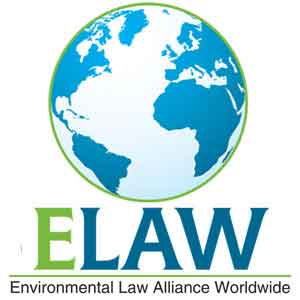
The Environmental Law Alliance Worldwide (ELAW) helps communities speak out for clean air, clean water, and a healthy planet. We are a global alliance of attorneys, scientists and other advocates collaborating across borders to promote grassroots efforts to build a sustainable, just future. ELAW advocates, working in their home countries, know best how to protect the environment. By giving our partners the legal and scientific support they need, ELAW helps challenge environmental abuses and builds a worldwide corps of skilled, committed advocates working to protect ecosystems and communities for generations to come.
Public interest lawyers from 10 countries founded ELAW in 1989. These lawyers were working together at a public interest law conference at the University of Oregon School of Law. As they talked, they discovered that communities in their countries were facing similar environmental challenges. They realized that if they could share strategies and legal and scientific information across borders, they could protect communities and the environment more effectively. ELAW's founders agreed to collaborate, replicate successful strategies, and learn from each other's experience. They began their cross-border collaboration in the early days of e-mail. As the network of public interest lawyers grew, ELAW became a pioneer in wiring the grassroots. Today, more than 300 public interest advocates from 80 countries work together through the ELAW network.
44) Hope for Paws
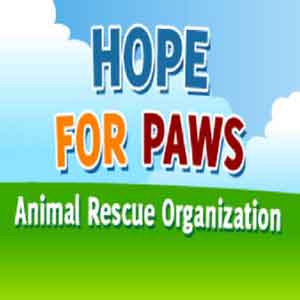
Hope for Paws was created to help animals who suffer and die every year because of negligence and abuse. It is a nonprofit animal rescue organization which rescues dogs and all other animals who are suffering on the streets and in the shelters. Its goal is to educate people on the importance of companion animals in the society. Eldad and his wife, Audrey Hagar, have been rescuing animals in California for almost a decade, and they’ve fostered hundreds of animals out of their Los Angeles apartment through their nonprofit organization, Hope for Paws. “In L.A. alone we have 30,000 stray dogs at any moment. People are walking by, seeing dogs like this and doing nothing. We would just love to have people change their behavior. Call someone. Call me. Call a rescue organization. Become a foster parent to a dog,” says Eldad.
45) National Audubon Society
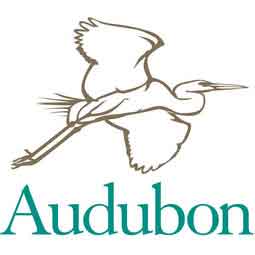
The National Audubon Society (Audubon) is a nonprofit environmental organization dedicated to conservation. Audubon’s mission is to conserve and restore natural ecosystems, focusing on birds, other wildlife, and their habitats for the benefit of humanity and the earth's biological diversity. Located in the United States and incorporated in 1905, it is one of the oldest of such organizations in the world and uses science, education and grassroots advocacy to advance its conservation mission. The society's main offices are in New York City and Washington, D.C., and it has state offices in about 24 states. It also owns and operates a number of nature centers open to the public, located in urban settings, including New York City, Joplin, Phoenix, Dallas, and Los Angeles, as well as at bird refuges and other natural areas. Audubon Centers help to forge lifelong connections between people and nature, developing stewards for conservation among young and diverse communities.
46) National Wildlife Federation
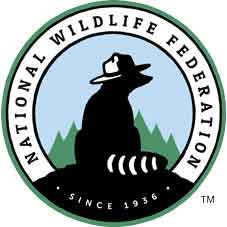
The National Wildlife Federation, America's oldest and largest conservation organization, works across the country to unite Americans from all walks of life in giving wildlife a voice. It has been on the front lines for wildlife since 1936, fighting for the conservation values that are woven into the fabric of our nation's collective heritage. It believes America’s experience with cherished landscapes and wildlife has helped define and shape our national character and identity for generations. Protecting these natural resources is a cause that has long united Americans from all walks of life and political stripes. To hunters, anglers, hikers, birders, wildlife watchers, boaters, climbers, campers, cyclists, gardeners, farmers, forest stewards, and other outdoor enthusiasts, this conservation ethic represents a sacred duty and obligation to protect and build upon our conservation heritage for the sake of wildlife, ourselves, our neighbors, and—most of all—for future generations. This belief led to forming a new strategic plan for saving wildlife that are suffering declines across America, with the goal of increasing America's fish and wildlife populations and enhancing their capacity to thrive in a rapidly changing world. The plan sets in motion a Common Agenda for Wildlife built upon sound science, clear priorities, and scalable solutions. Its Common Agenda includes a commitment to:
(i) Protect, Restore, and Connect Wildlife Habitat: Active restoration and reconnection of fragmented and degraded habitat across protected lands, working lands, waterways, coasts, and communities. (ii) Transform Wildlife Conservation: Advancing 21st century wildlife management, defending public trust resources, and confronting emerging stressors like climate change, invasive species, and wildlife diseases. (iii) Connect Americans with Wildlife: Inspiring the next generation of conservationists and mobilizing a diverse conservation army to broaden the stewardship ethic, conservation action, public and private investments, and support for policy changes necessary to save thousands of at-risk species in our time.
47) Ocean Defenders Alliance

Founded in 2000 and based in Orange County, California, Ocean Defenders Alliance (ODA) is a marine conservation organization which works to clean and protect marine ecosystems through documentation, education, and meaningful action. Working with affected communities, we focus primarily on the reduction and removal of man-made debris which poses serious threats to ocean wildlife and habitats. In addition to doing invaluable work at sea, ODA also works onshore to educate the public about the vital need for clean and healthy oceans. Through educational presentations at schools, expos, festivals, and dive clubs, we strive to inform people of all types and ages, raise their awareness about the plight of the oceans, and inspire them to join our efforts. ODA also reaches out to fishermen, restaurants, and the seafood community to enlighten them to these issues and seek to gain their commitment to becoming better stewards of the oceans.
48) Oil Change International

Oil Change International is a research, communication, and advocacy organization focused on exposing the true costs of fossil fuels and facilitating the coming transition towards clean energy. We focus on the fossil fuel industry because we view the production and consumption of oil, gas and coal as sources of global warming, human rights abuses, war, national security concerns, corporate globalization, and increased inequality. We also see fossil fuel industry’s interests behind every major barrier to a clean energy transition. Oil Change International contributes to the greater movement in a number of important ways: —
(i) Oil Change brings unique industry expertise that allows us to research and release timely, hard-hitting, campaign-relevant investigations countering corporate arguments for oil, gas and coal development; (ii) Oil Change engages in domestic and international policy forums to push a shift of public finances away from fossil fuels and towards clean energy; (iii) Oil Change provides experience and leadership in organizing resistance to the political influence of the fossil fuel industry, particularly in the United States.
It is a small, nimble organization with many decades of staff experience in campaigns as well as expertise in the economic, financial, social, and environmental issues surrounding the fossil fuel industry. Using this knowledge and experience, it produces cutting edge research and analysis and craft strategic, incisive campaigns, supporting a diversity of strategies and tactics to challenge the influence of the fossil fuel industry.
49) Pandas International
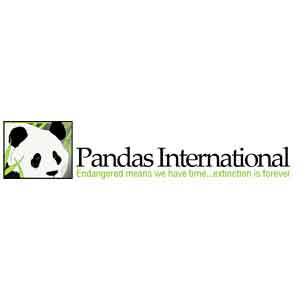
The Giant Panda, one of the most delightful and captivating of animals, is also one of the most endangered. The best scientific estimates indicate that there are less than 2,200 Giant Pandas remaining in the world today. Pandas International is a registered nonprofit organization which helps save this magnificent animal. Unlike other organizations which serve many animals, Pandas International is exclusively devoted to the Giant Panda. The mission of Pandas International is to ensure the preservation and propagation of the endangered Giant Panda. It provides public awareness and education, support for research, habitat preservation and enhancement, and assistance to Giant Panda Centers.
In 1999, after a trip to China and the Wolong Panda Center, the plight of the Giant Panda made such a dramatic impression on Suzanne Braden and Diane Rees that upon returning to the United States, they co-founded Pandas International, a registered 501(c)(3) non-profit, to help save this magnificent animal. Unlike other organizations which serve many animals, Pandas International is exclusively devoted to the Giant Panda. As the Director of Pandas International, Mrs. Braden (left with Qing Qing) coordinates both the annual and immediate needs of the Panda Centers managed by the China Conservation and Research Center for the Giant Panda. The personal relationships she has developed with Chinese officials, veterinarians and their staff members have allowed Pandas International to maximize its role in preserving this beloved species.
50) Paws Animal Wildlife Sanctuary

Paws Animal Wildlife Sanctuary, Inc. (PAWS) is an all-volunteer non-profit organization focusing on wildlife education, rescue and rehabilitation. We operate out of South Carolina and carry rehabilitation permits from the state and federal government, as well as USDA and USFWS permits for legal public display of resident animals in wildlife education programs. It is entirely volunteer-based; with no paid staff, 100% of donations go directly toward animal care. It is recognized by the IRS as a 501(c)(3), so all donations are tax deductible. Its mission is to rescue, rehabilitate, and release orphaned or injured wildlife, and to provide educational live-animal presentations that promote peaceful coexistence with native North American wildlife. Its hope is that our site can serve as an information resource for members of the public everywhere!
51) Plant & Animals Welfare Society (PAWS)
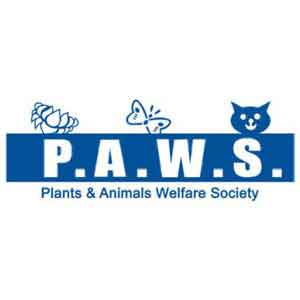
Plant & Animals Welfare Society – Mumbai (PAWS-Mumbai) is an independently registered Non-Government Organization (NGO) founded in 2002 by like-minded youth who love to work in the field of animal welfare and environment protection under the leadership of young animal lover & environment friend Sunish Subramanian Kunju. The youth believed that their consistent efforts at grass-root level would be able to bring about a change on the two fronts. Over the years we have raised several pertinent issues concerning the environment and animals. The journey of PAWS-Mumbai was started many years ago by helping local stray animals in central suburb of Mumbai that were ungraciously used in harrowing conditions, left to die on roadsides, full of maggot-wounds & weak due to starvation. On 14th May 2002, a few youngsters decided that they needed to effect a change, so they made the organization PAWS-Mumbai. Initially, we started our activities after our hard day’s work is not enough. “At night, we use to roam around walking or on our bikes with First Aid Kit, looking to treat maggot infected animals, we started making friendship by feeding stray and give first aid to injured one. If not possible for us, then we would have to transport them in auto rickshaws in order to get them to animal hospitals. As PAWS-Mumbai doesn't have a shelter where they can house and help injured animals, most volunteers take the animal victims home and treat them or send them to the nearest shelter or hospital. PAWS-Mumbai and our band of little volunteers is only NGO who have entered / feature in most of the nation, world records, have also received several letters of appreciation and awards for their work. The organization not only enjoys the support of celebrities but has also taken active part in activities conducted by PAWS-Mumbai. The organization grew strength to strength culminating in a successful society truly devoted to their chosen mission and vision.
52) Rainforest Partnership
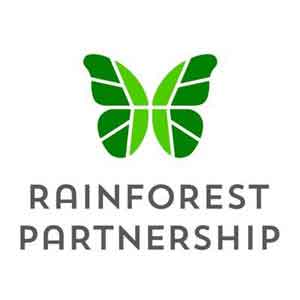
“We envision thriving tropical rainforests that support a healthy, vibrant planet.” Its mission is to protect and regenerate tropical rainforests by working with the people of the forests to develop sustainable livelihoods that empower and respect both people and nature. Rainforest Partnership is an impact and data driven international nonprofit dedicated to protecting tropical rainforests, the lungs of our planet and a critical factor in its health.
The Amazon Basin alone stores 400 million metric tons of CO2 per year – about 25% of all carbon stored on land and it produces 20% of the world’s oxygen. Nearly 4,500 acres of rainforests are lost every hour from illegal logging, mining, agriculture, forest fires, and oil drilling, resulting in a lot more carbon in the atmosphere – and a lot less oxygen. Rainforest Partnership works directly with rainforest communities to sustainably develop products found in the forest, giving the community a stake in keeping their trees intact.
53) RedRover
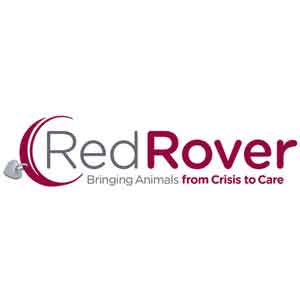
Founded in 1987, the mission of RedRover is to bring animals out of crisis and strengthen the bond between people and animals through emergency sheltering, disaster relief services, financial assistance and education. RedRover accomplishes its mission by engaging volunteers and supporters, collaborating with others and maximizing the use of online technology. RedRover is a soft hand and warm heart in times when animals and people are in need, crisis and pain. It brings animals out of crisis and into care, and discovers new ways to strengthen the common bond between people and animals.
Inspired by the RedRover Readers curriculum, Susan Courtney and her first graders at Norwood Street School have rescued kittens from the street and more than 20 more cats and kittens from a hoarder’s house; they’ve also helped two families in their Los Angeles neighborhood unchain their dogs and set them up in dog runs. Says Courtney: “One by one, animal lives are being made better because students find their own voice and speak up freely to each other, to their families and their community.”
Membership contributions support all of RedRover’s lifesaving programs. In 2016, 79% of RedRover’s expenses were devoted to direct program offerings, with only 21% going to supporting services. RedRover also meets all of the standards to qualify for the Combined Federal Campaign (CFC), which is the charitable workplace fund drive conducted by the U.S. Government for all federal employees. RedRover’s CFC # is 10463.
54) Stop Animal Exploitation Now! (SAEN)
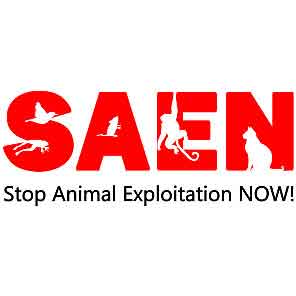
Stop Animal Exploitation NOW! (SAEN) was founded in 1996 to force an end to the abuse of animals in laboratories. Our first major event was a news conference that revealed the suffering endured by dogs, rabbits, and primates in 9 laboratories across the United States. Documents obtained by SAEN had revealed severe abuses within the laboratories of Michigan State University, University of Southern California, University of Washington, Stolle Research and Development, University of South Florida, Yerkes Regional Primate Research Center (associated with Emory University), University of Florida, University of Pennsylvania, and the University of Toledo. The USDA fined several of these laboratories, and abusive primate experiments within the laboratories of the University of Toledo were terminated subsequent to the SAEN news conference.
Since its inception, SAEN staff and the tireless volunteers who support our campaigns on the local level have allowed us to make a real difference for the animals. With the help of grassroots activists, SAEN has ended pound seizure (the sale of former pets from animal shelters to labs) in Nashville (TN), and we have also ended abusive experiments on primates in San Diego (CA). In its brief history, SAEN has made a concrete difference for the animals, and it will continue to fight for their freedom until all the laboratory cages are empty.
55) The Humane Society of the United States
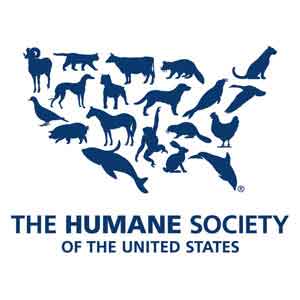
The Humane Society of the United States is the nation’s largest and most effective animal protection organization. The organization and its affiliates provide hands-on care and services to more than 100,000 animals each year, and professionalizes the field through education and training for local organizations. We are the leading animal advocacy organization, seeking a humane world for people and animals alike. The organization is driving transformational change in the U.S. and around the world by combating large-scale cruelties such as puppy mills, animal fighting, factory farming, seal slaughter, horse cruelty, captive hunts and the wildlife trade. The HSUS, along with their affiliates, is the global leader in making the world a more humane place for all animals. They also at the forefront of animal care, through our animal sanctuaries and rehabilitation centers, Animal Rescue Team, wildlife response units, veterinary division, international street dog defenders and other hands-on programs.
56) The Wild Animal Sanctuary
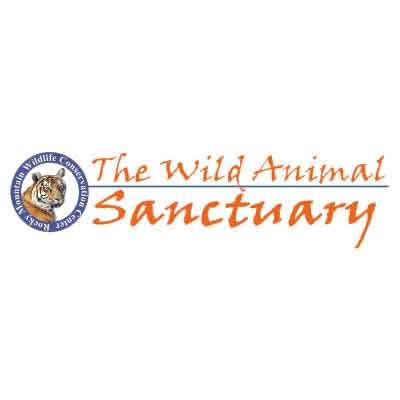
The Wild Animal Sanctuary is a 720-acre (290 ha) animal sanctuary located near Keenesburg, Colorado, United States. The sanctuary specializes in rescuing and caring for large predators which are being ill-treated, for which their owners can no longer care, or which might otherwise be euthanized. Created in 1980, The Wild Animal Sanctuary is situated on grassland North of Denver, and has helped over 1,000 animals since it first opened. As of 2013, it was home to over 330 animals.
The stated mission of the sanctuary is "to rescue captive large carnivores who have been abused, abandoned, illegally kept or exploited; to create for them a wonderful life for as long as they live; and to educate about the causes and solutions to the Captive Wildlife Crisis." The sanctuary states that there are many large carnivores living outside the zoo system in the United States, including 4000 or so tigers living as pets in Texas alone, and many of these come from the black market trade in exotic animals.
57) Voices for Biodiversity
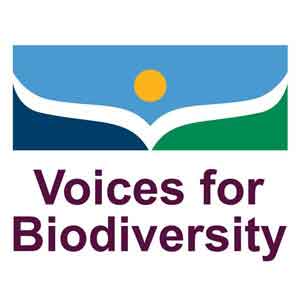
Voices for Biodiversity is a conservation-oriented nonprofit that connects people from around the world to protect biodiversity. Voices for Biodiversity’s digital multimedia platform builds community around global story-sharing, creating a gathering place for those who believe humanity’s health and well-being depend upon the health and well-being of other species. Voices for Biodiversity focuses on sharing the voices of people everywhere, many of whom usually would not be heard, such as indigenous and local peoples, students, non-experts, and more. Anyone can submit content and be published. For those not sure of their capabilities in writing and other multimedia forms, V4B is able to assign an eco-reporter to help you share your story.
The Voices for Biodiversity concept began in 2009 when anthropologist Dr. Tara Lumpkin was studying how human nature affects Mother Nature. How people perceive, think, and feel (personal philosophies and group cultures) affects how people interact with other species and ecosystems. Dr. Lumpkin thought: What better way to make people aware of this reality than to use the ancient art of storytelling? And so, Voices for Biodiversity was born.
58) World Animal Awareness Society

The World Animal Awareness Society & WA2S Films create innovative social programs and produce cutting edge viral videos about human - animal interaction. Animal welfare nonprofits and communities benefit directly from innovative programming custom produced to each specific subject. Every time you watch & share a World Animal Awareness Society YouTube video, you support their important mission! World Animal Awareness Society & WA2S Films - A Best In America Charity, Top Rated Non Profit and "Best of CFC #80876 Brief Origin Story:
'On Sunday September 4, 2005 I found myself beginning a new life's mission as I left Michigan for New Orleans and I began to document much of the animal rescue efforts immediately following Hurricane Katrina. What I discovered? An entire world I had no idea existed and one most people never pay attention to: the world of animal rescue. I found people risking everything, sometimes their lives, to rescue these animals, saving other peoples pets. This journey set me on a path to discover/uncover the many ways the World Animal Awareness Society & WA2S Films can assist people. From rescuing people's pets after disaster, like Hurricane Harvey and Irma. To creating interventions from the American Strays 2030 Project data for the US Post Office to help humanely address stray dogs in large urban spaces. To helping service men and women reconnect with a dog or other pet they developed a relationship with where they were deployed — anywhere around the world. To helping keep track of quality animal welfare and rescue organizations and developing partnerships to deploy humane programs, including the "Good Pet Guardian Lesson Plans" developed for elementary school children.' — says Tom McPhee, the Founder and Executive Director of World Animal Awareness Society & WA2S Films.
59) Tree Roo Rescue and Conservation Centre Ltd.
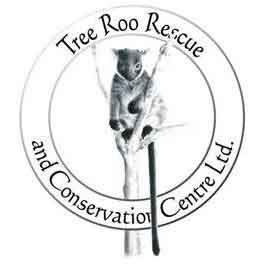
It is a nonprofit organization that rescues and rehabilitates, orphaned, injured or displaced tree kangaroos for release back into the wild or for life in captivity as breeding animals for education and conservation in Zoos. It also wish to educate the public and increase awareness of Australian tree kangaroo conservation and the threats that bring them into care such as dogs and cars. Its Vision is to assist in the prevention of the extinction of Tree kangaroos.
Neil, my husband, and I moved here to Malanda on the Atherton Tablelands, in Far North Queensland, in 1998. We moved from Darwin where we both worked at the Museum and Art Gallery of the Northern Territory. Neil worked in Graphics and Display and I was the Collections manager for Natural Sciences and had worked there for 10 years. In Darwin we begun our life as wildlife carers in 1990. So when we moved here we were keen to continue as carers and met a wildlife carer called Margit Cianelli who introduced us to Lumholtz's tree-kangaroos. Thanks Margit! Of course we were shocked to find out that there was still very little known about these amazing creatures. So with the encouragement of a few others, I embarked on my journey of a PhD with Lumholtz tree kangaroos through James Cook University in Cairns in 2000. It took me 5 years (instead of 3). At the same time we started to look after any that came into care, with Margits support and knowledge. There it all began, our life with tree kangaroos. We have looked after many in the past 18 years, but our favourites must be those that we have hand raised.
Firstly William, who lived in the wild and came home very day passed at the age of 12 years old, Issy who was killed by dogs at the age of 5.5 yrs, fortunatley Issy had a joey called Phoebe who was not with her when she was killed and Phoebe also had her own joey and came home until he was big enough to emerge from the pouch. We have raised another 3 males, Joshie, Benny and Mackenzie since and a female called Zoe. We have of course rescued far more adults, from dogs attacks to car hits and now a new problem, neurological blindness. With the number of rescues increasing every year, we decided we had to set up a non-profit organisation to help us look after them more effectively and efficiently. The funds raised from donations will be used to pay for ongoing costs such as vet bills and food - they costs us a fortune in sweet potato, chick peas, bananas, corn and costs of building more facilities. We have built new facilities, our rescue centre with larger enclosures and a treatment area and isolation rooms, since beocming a non profit thanks to Dreamworld Wildlife Foundation, a Gambling grant and some very special donors and volunteers. The official website will enable us to bring you all up to date with what is happening here, how many are in care, their stories and how donated money is being spent.Please let us know if there is anything you wish to see on the website and things you wish to know (if we can answer) about Lumholtz tree kangaroos.
60) The United Nations Children's Fund (UNICEF)
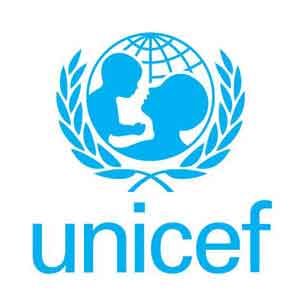
The United Nations Children's Fund is a United Nations programme headquartered in New York City that provides humanitarian and developmental assistance to children and mothers in developing countries. UNICEF works in 190 countries and territories to protect the rights of every child. UNICEF has spent 70 years working to improve the lives of children and their families. Defending children's rights throughout their lives requires a global presence, aiming to produce results and understand their effects. UNICEF believes - All children have a right to survive, thrive and fulfill their potential – to the benefit of a better world. For 70 years, UNICEF has worked to improve the lives of children and their families. Despite remarkable challenges around the world, UNICEF staffers fight for the rights of every child seeking safe shelter, nutrition, protection from disaster and conflicts, and equality. UNICEF works with the United Nations other United Nations agencies to make sure that children are on the global agenda. UNICEF strikes a balance between thorough research and practical solutions for children.
61) Stand For Trees
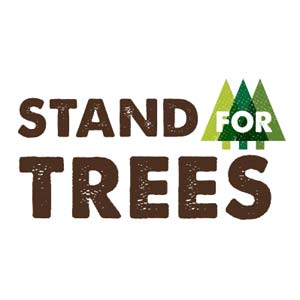
Stand For Trees. Think of it as a global, grassroots intervention to halt deforestation.
Stand For Trees empowers everyday citizens — all of us — to take direct action to protect endangered forests and reduce the impacts of climate change. Every time you buy a Stand For Trees Certificate, you help local forest communities around the world keep a specific forest standing and prevent a tonne of CO2 from entering the earth's atmosphere.
Stand For Trees Certificates are high-quality verified carbon credits based on the proven REDD+ model and meet the rigorous standards set by the Verified Carbon Standard (VCS), each of which is a Verified Carbon Unit (VCU) issued by VCS. Further, all Stand for Trees projects have attained or are committed to attaining verification to the Climate Community and Biodiversity Alliance standard, a partnership of leading NGOs that includes CARE, The Nature Conservancy, and The Rainforest Alliance. The credits are registered on the world's largest environmental registry services provider, Markit, and meet Code REDD's peer-reviewed international Code of Conduct.
62) WeForest
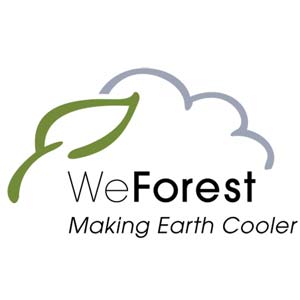
Bill Liao, co-founder of WeForest is also "Special Envoy for Sustainable Development and the Environment of St. Kitts & Nevis" and was asked by Prime Minister Denzil Douglas to attend Copenhagen COP15 as an official party. The idea of WeForest in 2008 came out of a thorough search for scientific evidence and provided a feasible, realistic and actually quite simple solution to the urgent issue of global warming, which was first presented at that event. Marie-Noëlle Keijzer met Bill in 2009 and they decided to transform this wonderful idea into an NGO. WeForest was established in Belgium in 2010 as a VZW/ASBL (non profit association). The powerful business model of using trees as a currency for companies to engage their millions of customers was enhanced in 2014 when technology was used for the first time by brands to directly distribute the trees to their customers.
Its vision is a world where communities and nations sustainably manage forest landscapes and natural resources to address climate change, enhance livelihoods, increase resilience and safeguard biodiversity. Its mission is to advance innovative, scalable and lasting solutions to restore forest landscapes for climate, people and planet. Forest restoration best practices, tools and supportive policies are being effectively used to deliver globally agreed targets.
63) Wikimedia Foundation
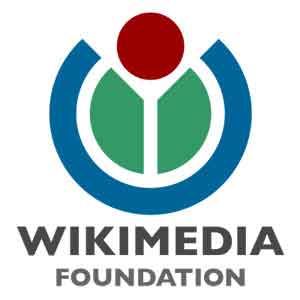
The Wikimedia Foundation, Inc. is a nonprofit charitable organization dedicated to encouraging the growth, development and distribution of free, multilingual, educational content, and to providing the full content of these wiki-based projects to the public free of charge. The Wikimedia Foundation operates some of the largest collaboratively edited reference projects in the world, including Wikipedia, a top-ten internet property. Imagine a world in which every single human being can freely share in the sum of all knowledge. That’s their commitment. The Wikimedia Foundation relies heavily on the generous support from its users. Please consider making a donation today, be it time or money.
Wikipedia is the world’s largest free encyclopedia available to everyone who has access to the internet. There is hardly any topic on which Wikipedia doesn’t have the information. It is the largest free source of knowledge. Hence, all must support the organization behind, which has been operating these kinds of giant projects for its entire life. Other projects include – Wiktionary (Dictionary and Thesaurus), Wikinews (Free Content News Source), Wikibooks (Free Text Books and Manuals), Wikiquote (Collection of Quotations), Wikisource (Free Source Documents), Wikiversity (Free Learning Tools), Wikivoyage (Free Travel Guide), Wikispecies (Directory of Species), Commons (Shared Media Repository), Wikidata (Free Knowledge Base), Mediawiki (Free Wiki Software).